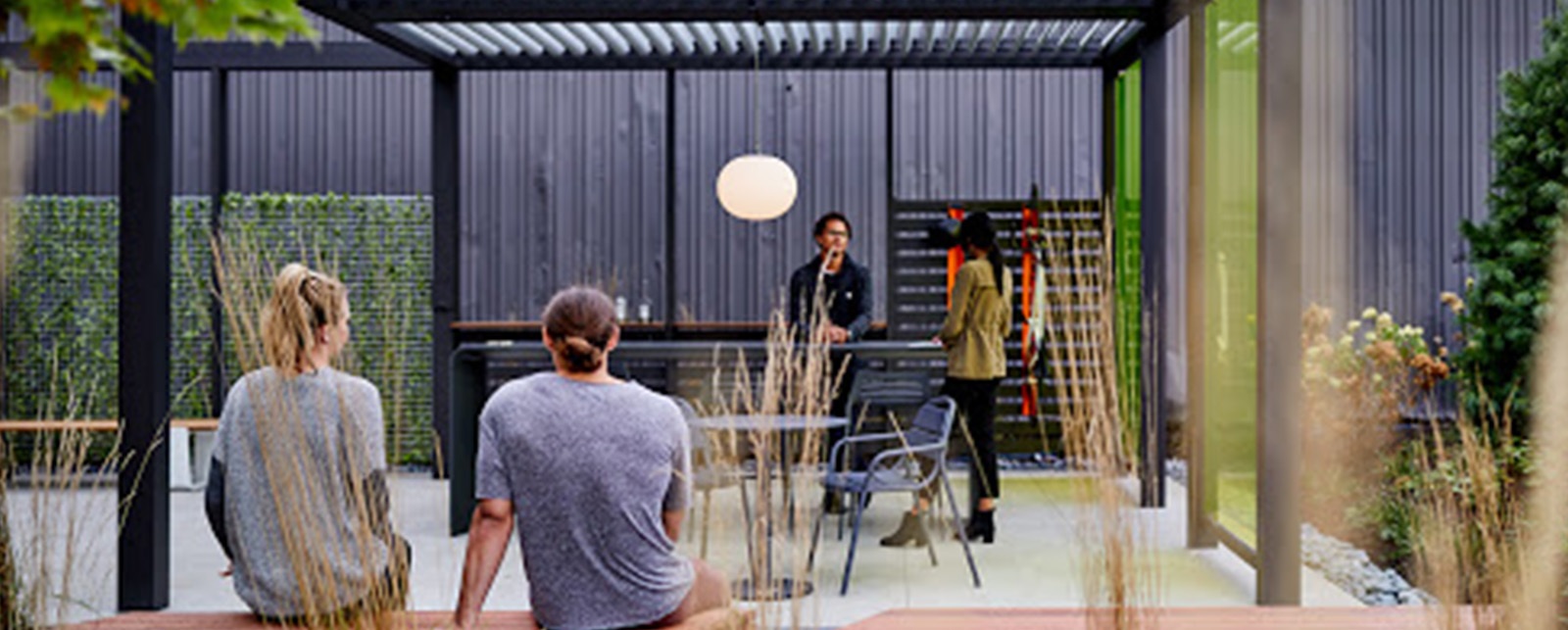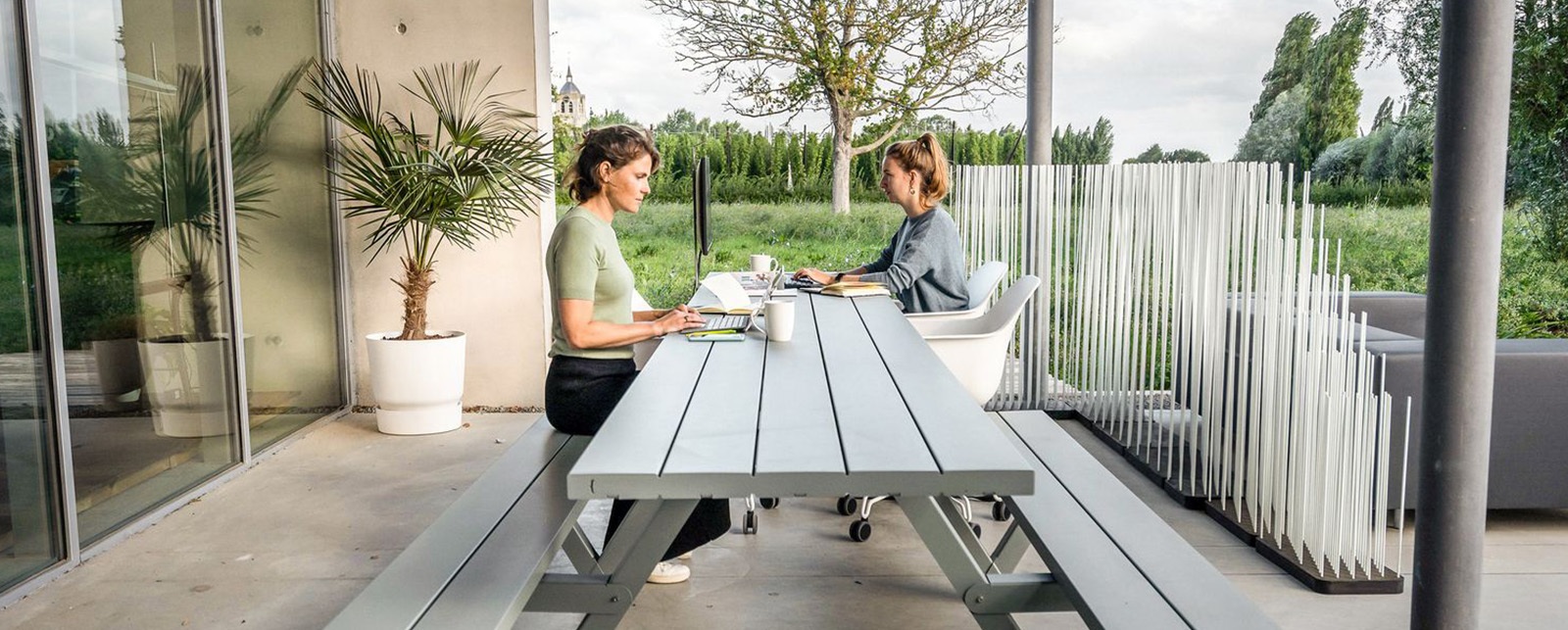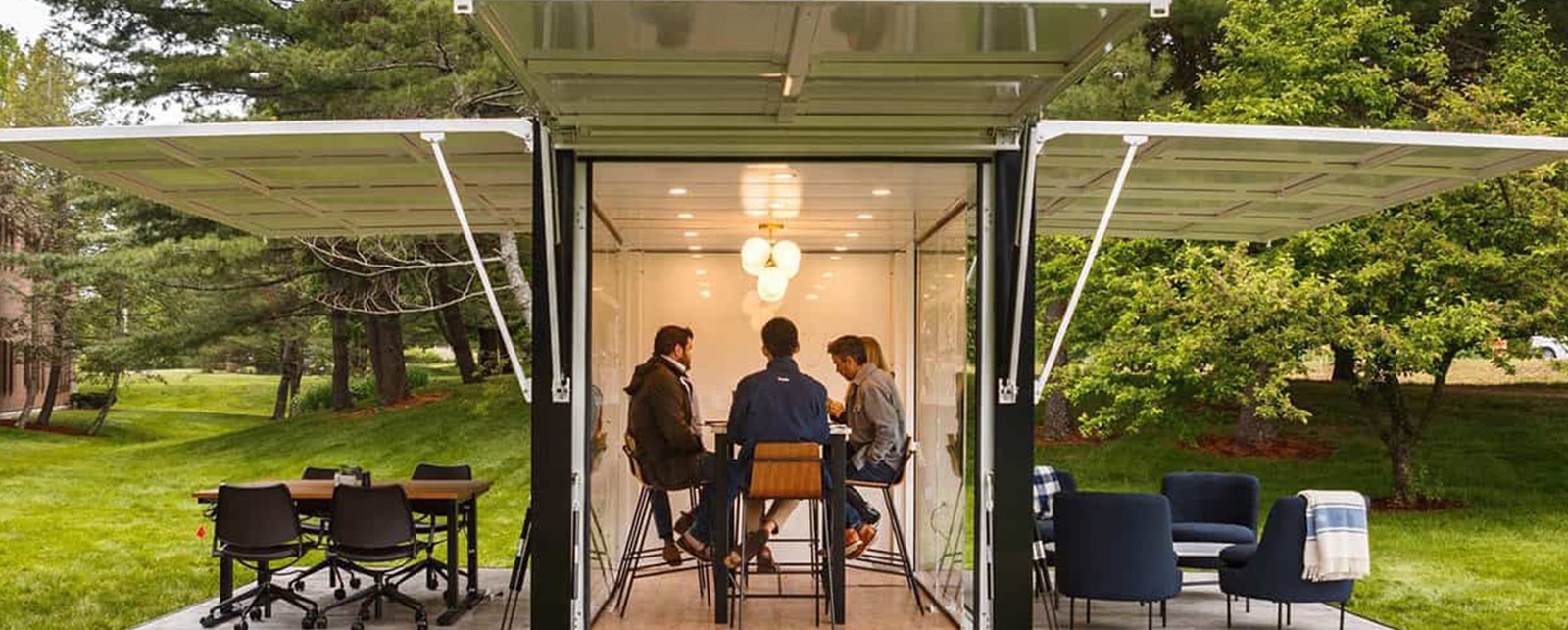

Workplaces designed with connections to nature and to the outdoors have been delivered long before we all started working from home. Biophilic, people-centric design has appeared regularly in product and interior design trade shows for years. And countless surveys and research studies identify the links between our proximity to natural elements, wellbeing and increased workplace productivity.
But then 2020 happened, and all conversation shifted to a safe return to the workplace.
A recent Steelcase survey revealed 73% of employees rate air quality and adherence to safety protocols as their top two requirements for returning to work. It is clear that before productivity, before belonging, and before employees can feel autonomous, employers will need to solve the problem of workplace safety.
Up until now, proposed solutions have mostly remained indoors, but not long after the workforce shifted to a work from home model, workplace designers got to work reimagining floorplans. Checkerboard seating, sanitation stations, and countless screen options from cardboard to plexiglass dominated the new layouts. Wayfinding graphics popped up in every lobby, walkway, and vacant seat in buildings across the country. The current blind spot for many organizations might be a solution that combines safety with biophilia: a return to the outdoors.
What if, in our post pandemic world where safety is the focus, we found a new home for workstations, conference rooms, and technology outdoors? The outdoors provides all the space and fresh air that the most safety-conscious companies could ask for, along with the productivity and creativity enhancing properties of nature. And we know that harnessing the outdoors to provide viable workspaces for employees in 2021 will take reimagining what those spaces look like and what they can do.
Fortunately, our imaginations don’t need to stretch very far. Companies like LinkedIn
have piloted outdoors workstations in their environment, where employees seamlessly connect to their monitors and shades block the glare from the sun. And today, manufacturers are thinking about the outdoors as more than space to dine or unwind and relax after work, they are building weather resistant, durable, materials and systems that can easily relocate, along with new structures that act as barriers to the elements.

If putting outdoor spaces to work is such a great idea, and it is, then why hasn’t the solution been more widely adopted? The answer lies in power and connectivity, the lack of which limits access to work tools and furniture conducive to outdoor collaboration. Now more than ever, businesses need integrated, seamless solutions bringing construction, furniture, and technology together to remain as user friendly and intuitive as possible, and that requirement that must extend to outdoor spaces. Employees must be able to switch from indoor to outdoor working with access to the same tools and technology without missing a beat.

We know how to solve for the design and technical issues presented by outdoor workspaces, but like many shifts in the workplace, it comes down to the organization’s culture. In 2018 L.L. Bean launched their “Be an Outsider at Work” campaign to highlight what makes us better workers. Along with Slate, they surveyed over 1000 employees about working outdoors. Nearly 65% said their job prevented them from working outside, listing Wi-Fi access, screen glare, and a negative overall impression from their leaders as issues. We've come a long way in addressing those design and perception concerns, especially since safety and wellbeing are paramount to returning to the office.
When companies combine intentional and people-centered design decisions with the intuitive furniture and tools their employees need to do their jobs, the results are clear: some of the highest-performing workspaces across the globe. These are results we have experienced firsthand. Using that same methodology today, we are helping businesses turn the perception and usability of their outdoor environments from a “nice to have” into a necessary extension of the office, one that balances safety and productivity.